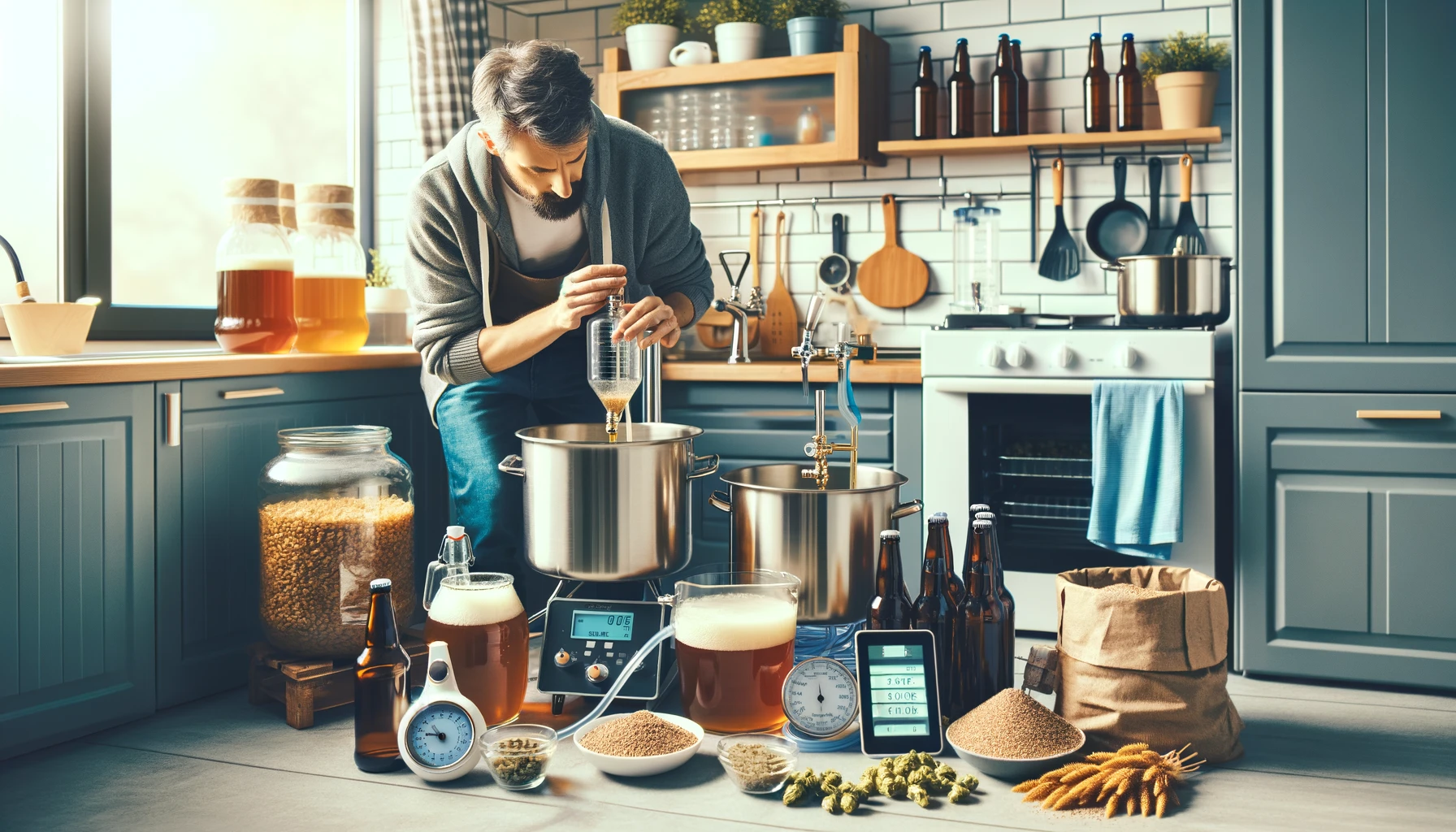Homebrewing beer is an engaging hobby that marries the art of creativity with the science of fermentation. It’s an activity that allows enthusiasts to delve into the depths of beer crafting, exploring various flavors and techniques to create a beverage that is uniquely their own. Whether you’re a beer aficionado looking to take your passion to the next level or a curious beginner eager to try something new, this guide is designed to introduce you to the world of homebrewing.
Getting Started: Materials and Equipment
Before embarking on your brewing adventure, you’ll need to gather the right materials and equipment. The essentials include:
- Brewing Kit: This typically comprises a fermenter, airlock, and hydrometer. These kits are designed to simplify the brewing process for beginners.
- Large Pot for Boiling: A crucial piece of equipment for the initial brewing stages.
- Brewing Ingredients: Basic ingredients include malt extract (the sugar source), hops (for bitterness, flavor, and aroma), and yeast (the fermenting agent).
- Bottles and Caps: For storing your beer once it’s brewed.
- Sanitizer: To ensure all equipment is free from bacteria and other contaminants.
- Thermometer: To monitor the temperature during various stages of the brewing process.
- Stirring Spoon: A non-reactive spoon (usually stainless steel or plastic) for mixing.
Choosing Your Beer Style
Your brewing journey starts with deciding on the type of beer you wish to create. For beginners, ales are often recommended due to their forgiving and simpler fermentation process. Ales can offer a wide range of flavors and are a great starting point for those new to brewing.
The Importance of Sanitization
One of the most crucial steps in brewing is sanitizing your equipment. Any presence of bacteria or wild yeast can spoil your beer, making sanitization a key factor in ensuring a successful brew.
The Brewing Process Explained
- Boiling: Start by boiling water and adding malt extract, which serves as the foundational sugar that yeast will ferment.
- Adding Hops: Hops are added during the boil at various times depending on the desired bitterness, flavor, and aroma.
- Cooling the Wort: After boiling, the mixture (now called wort) must be cooled as quickly as possible to a yeast-friendly temperature.
- Fermentation: Transfer the cooled wort into your fermenter, add yeast, and let it ferment. This process usually takes a few weeks, during which the yeast converts sugars into alcohol and carbon dioxide.
- Bottling: Once fermentation is complete, transfer the beer into sanitized bottles, cap them, and let them carbonate.
Tips for Successful Homebrewing
- Follow Recipes Closely: Especially for your initial brews, adhering to recipes can help avoid common pitfalls.
- Keep Detailed Notes: Documenting your brewing process and any variations you make can be invaluable for troubleshooting and refining future batches.
- Patience is Key: Brewing and fermentation are time-consuming processes. Rushing can compromise the quality of your beer.
- Experiment: Once you’re comfortable with the basics, don’t be afraid to experiment with different ingredients and techniques.
Enjoying Your Homebrew
After bottling, your beer will need a couple of weeks to carbonate. Then, it’s ready to be chilled and enjoyed. Sharing your brew with friends and family can be one of the most rewarding aspects of homebrewing, offering a sense of pride and accomplishment.
Homebrewing beer is more than just a hobby; it’s a journey into the craft of beer making. It allows you to explore your creative side while enjoying the fruits of your labor. As you become more experienced, you’ll find that the possibilities are endless, with each brew offering new challenges and rewards. Welcome to the world of homebrewing—where patience, creativity, and a love for beer come together to create something truly special.



